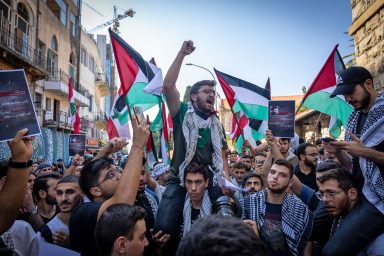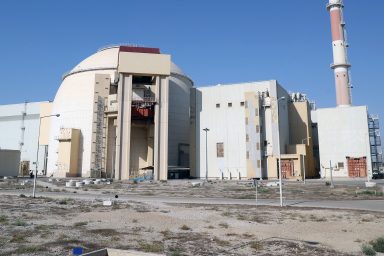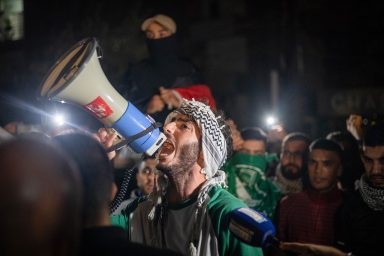Police greet demonstrators with tear gas, water cannons, and rubber bullets on the anniversary of the gigantic blast that shook Beirut and for which no one has been held responsible.
Thousands clashed with police on the streets of Beirut in a display of outrage against the Lebanese government and to commemorate the victims of last year’s massive port explosion, which killed 228 people, displaced 300,000, forced businesses to close, and caused billions in damages.
A large number also used Wednesday’s anniversary as an opportunity to protest Iranian influence in the country, especially via Hezbollah, the US-designated terrorist group that maintains significant control in Lebanon.
A year on, an investigation into the blast — one of the largest non-nuclear explosions in history — has been blocked, and attempts to form a new government have failed. As the country sinks deeper into one of the worst economic crises since the mid-19th century, many Lebanese have lost hope. They even view the protests, or the Revolution as it is called in Lebanon, as having failed. Some say more “extreme” action is needed — a complete toppling of the government. This while a growing number are seeking to flee from a country gripped by corruption, food and fuel shortages, and extended disruptions to electric power.
Wednesday’s protests began at various locations in the city before converging in front of the Beirut port, where families of victims of the blast spoke. Later on, protesters moved toward the Parliament, where they clashed with police. As night fell, police pushed demonstrators back, using tear gas to disperse crowds. Protesters threw rocks and debris and launched fireworks into formations of police.

Police fire tear gas and protesters light fires and throw stones and debris as they attempt to move toward the parliamentary building. Photo credit: Hunter Williamson / WhoWhatWhy

A man holds a Lebanese flag while standing beside lit debris. Photo credit: Hunter Williamson / WhoWhatWhy

A boy covers his nose as he moves away from tear gas and smoke. Photo credit: Hunter Williamson / WhoWhatWhy

As night falls, a man confronts police, accusing them of being complicit in a corrupt government. Photo credit: Hunter Williamson / WhoWhatWhy

People examine Beirut’s port. A year later, large amounts of debris still remain, and much of the infrastructure is still destroyed. Photo credit: Hunter Williamson / WhoWhatWhy

Thousands of people converge in front of the Beirut port for the anniversary of the explosion. Banners hanging from buildings accuse the government of being responsible for the blast. Photo credit: Hunter Williamson / WhoWhatWhy

Banners hanging from buildings accuse the government of being responsible for the blast. Photo credit: Hunter Williamson / WhoWhatWhy

Steven Sokhen, 29, holds a sign addressed toward the government. Many Lebanese accuse politicians of being responsible for the 2020 port explosion. Photo credit: Hunter Williamson / WhoWhatWhy

A protester holds a sign blaming the Lebanese government for the 2020 Beirut port explosion. A Human Rights Watch report released on the eve of the blast’s anniversary stated that some government officials were aware that the large amount of ammonium nitrate — the chemical compound that caused the explosion — being stored at the port “could result in and tacitly accepted the risk of the deaths occurring.” Photo credit: Hunter Williamson / WhoWhatWhy

A woman holds a sign suggesting the killing of politicians, a sentiment that continues to grow as the government repeatedly fails to enact reforms that will rescue Lebanon from its array of crises. Photo credit: Hunter Williamson / WhoWhatWhy

Resentment and anger toward Lebanon’s politicians continue to grow as they repeatedly block attempts to form a new government or move forward with an investigation into last year’s explosion. Photo credit: Hunter Williamson / WhoWhatWhy

A woman holds a sign demanding the removal of Iranian influence in Lebanon and support for United Nations Security Council Resolution 1559, a 2004 resolution calling for free and fair presidential elections without outside influence and “remaining foreign forces to withdraw from Lebanon.” Photo credit: Hunter Williamson / WhoWhatWhy





